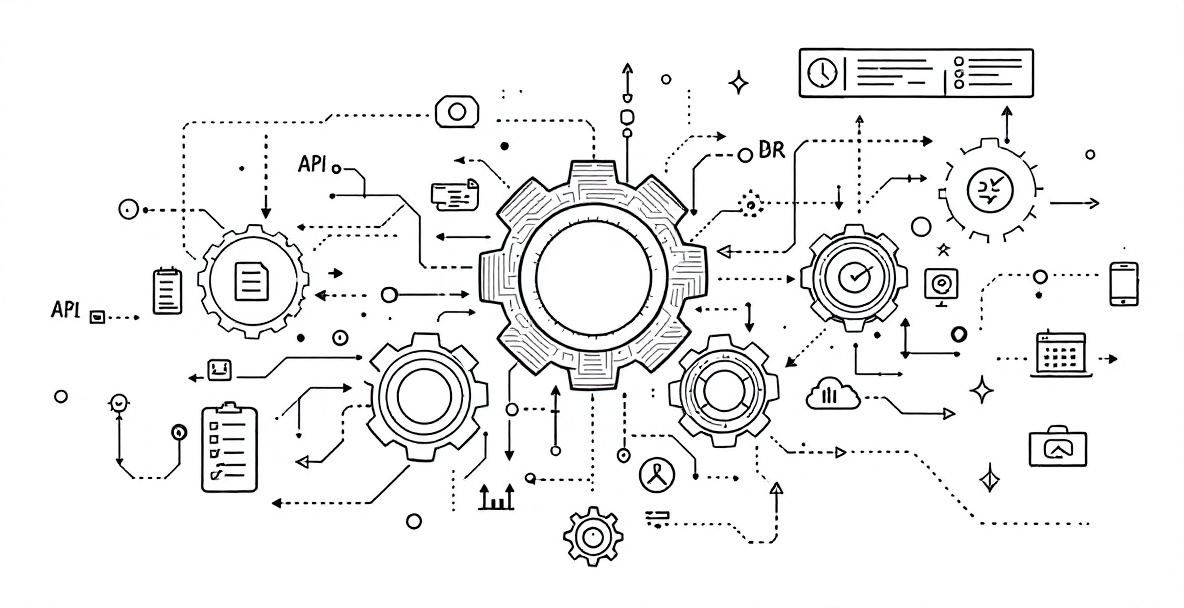In the ever-evolving landscape of freelancing, the difference between thriving and merely surviving often comes down to one critical factor: productivity. As someone who's spent years navigating these waters before founding SeoFlow, I've discovered that the right productivity tools don't just save time—they fundamentally transform how freelancers work, allowing them to deliver more value without working more hours. Whether you're a content creator, blogger, or business owner managing your own content, the tools I'm about to share can help you reclaim your time while doubling your output.
The Freelance Time Crunch: Why Productivity Matters More Than Ever

The freelance life promises freedom and flexibility, but this promise often collides with the reality of juggling multiple clients, projects, and deadlines simultaneously. Today's freelancers face unprecedented pressure to produce more content across more platforms than ever before. This isn't just about working harder—it's about finding smarter ways to manage an increasingly complex workflow.
The Real Cost of Inefficiency
When I talk to freelancers about their biggest challenges, time management consistently tops the list. But many don't realize the true cost of inefficiency. Consider this: every hour spent on administrative tasks, hunting down client feedback, or manually publishing content across platforms is an hour not spent on billable work or business growth.
Inefficiency creates a cascading effect. When you're constantly switching between tasks, you lose valuable momentum. Research suggests that context switching can consume up to 40% of your productive time. For freelancers, this translates directly to lost income. If you bill $75 per hour and lose just two hours daily to inefficient processes, that's $750 in potential revenue evaporating every week.
Beyond the financial impact, there's also the toll on creativity and work quality. Constantly racing against the clock makes it difficult to enter the flow state where your best work happens. The pressure to produce quickly often leads to cutting corners, resulting in content that doesn't reflect your true capabilities.
The Productivity Multiplier Effect
The most successful freelancers understand something crucial: productivity isn't linear. Small improvements in your workflow can yield exponential results. I call this the Productivity Multiplier Effect.
When you implement the right systems and tools, you create compounding efficiency. For example, a content template might save you 30 minutes per article. If you write 10 articles monthly, that's 5 hours saved. But the real magic happens when you combine tools—that content template paired with automated research and publishing capabilities might save 2 hours per article, or 20 hours monthly. Suddenly, you've freed up half a work week.
The multiplier effect extends beyond time savings. With streamlined processes, your work quality improves, leading to higher client satisfaction, better retention, and stronger referrals. You also gain the mental bandwidth to focus on high-value activities like developing new skills or nurturing client relationships—areas that directly impact your income and professional satisfaction.
Core Project Management Tools for the Modern Freelancer

At the foundation of any productive freelance operation lies a rock-solid project management system. These tools form the backbone of your workflow, keeping you organized and accountable while minimizing administrative overhead.
Task Management Platforms
The right task management platform serves as your external brain, ensuring nothing falls through the cracks. Today's options go far beyond simple to-do lists.
Platforms like Notion and ClickUp offer comprehensive workspace solutions where you can organize projects, track deadlines, and structure your workflow. They allow you to create customized dashboards that give you an at-a-glance view of your progress and priorities.
What makes these platforms particularly powerful is their flexibility. You can create templates for recurring project types, build databases of client information, and establish standardized processes that ensure consistency. For content creators, this might mean creating a content production pipeline that tracks each piece from ideation through publication and promotion.
The most advanced task management systems now incorporate AI assistance for task prioritization and time estimation, helping you make more realistic commitments and maintain a sustainable workload. By centralizing your project information, you eliminate the time-consuming hunt for details across emails, messages, and documents.
Time Tracking Solutions
You can't improve what you don't measure. Time tracking tools provide vital insights into how you're actually spending your working hours, often revealing surprising patterns.
Solutions like Toggl and Harvest make it effortless to log time across projects and clients. The data they collect helps you identify productivity patterns, optimize your schedule around your natural energy peaks, and accurately bill clients.
Beyond basic tracking, today's time management tools offer sophisticated reporting that highlights your most and least profitable activities. This visibility allows you to make strategic decisions about which services to emphasize or which clients might need rate adjustments. Many also integrate directly with invoicing systems, streamlining your billing process and improving cash flow.
For freelance content creators, time tracking reveals how long different content types actually take to produce, allowing you to price your services more accurately and identify opportunities for efficiency gains. Recent research from the Bureau of Labor Statistics provides valuable insights into self-employment hours that can help freelancers benchmark their time management practices against industry standards.
Client Communication Hubs
Scattered communication is a major productivity killer. Hunting through email threads, chat messages, and comments across multiple platforms wastes countless hours and inevitably leads to missed details.
Centralized communication platforms like Slack and Basecamp create dedicated spaces for client interaction, keeping all project-related conversations in one searchable location. These tools allow you to organize discussions by project or topic, share files seamlessly, and maintain a complete history of decisions and feedback.
The most effective client communication systems establish clear boundaries and expectations. By defining when and how you'll communicate, you protect your focused work time while ensuring clients still feel attended to. Many platforms allow you to set working hours and automate responses outside those times, maintaining professionalism without sacrificing your schedule.
At SeoFlow, we've built client communication directly into our content workflow, allowing collaborators to provide feedback within the context of the content itself—eliminating the confusion of disconnected commentary and reducing revision cycles significantly.
Content Creation Accelerators

For content creators, the actual creation process consumes the bulk of productive time. The right tools can dramatically accelerate this core function without sacrificing quality.
Writing and Editing Tools
Modern writing tools go far beyond basic word processors, offering AI-powered assistance that can dramatically speed up content production.
Advanced platforms like Grammarly and Hemingway Editor not only catch errors but provide stylistic suggestions that elevate your writing. They help maintain consistency in tone and readability, especially important when working across multiple clients with different brand voices.
The newest generation of AI writing assistants can help overcome the dreaded blank page syndrome by suggesting outlines, generating first drafts, or expanding on your bullet points. While these tools won't replace human creativity, they provide valuable starting points that you can refine and personalize. A comprehensive analysis of these AI tools' capabilities can be found in a recent research paper on arXiv that examines how large language models are transforming content creation workflows.
At SeoFlow, we've developed AI technology that understands brand voice at a deeper level, creating content that captures each client's unique style and perspective. Our system analyzes top-performing content in specific niches to incorporate proven engagement patterns, giving freelancers a tremendous head start while maintaining authenticity.
Visual Content Creation Tools
Visual elements are no longer optional in content marketing—they're essential. However, creating professional graphics has traditionally required specialized skills and expensive software.
Today's visual content tools like Canva and Visme democratize design, allowing non-designers to create stunning graphics, infographics, and presentations through intuitive interfaces and pre-designed templates. These platforms save hours of design time while significantly enhancing the visual appeal of your content.
For more advanced needs, tools like Figma bridge the gap between professional design capabilities and accessibility, offering powerful features in a collaborative, web-based environment. This means freelancers can create sophisticated visuals without investing in expensive desktop software.
The most efficient approach combines templated designs with your client's brand elements, creating a library of customized templates you can quickly adapt for each new piece of content. This maintains visual consistency while dramatically reducing production time.
Content Planning and Scheduling
Strategic content planning eliminates the inefficiency of last-minute scrambles and reactive content creation. The right planning tools help you develop cohesive content strategies that align with client goals and marketing calendars.
Platforms like Airtable and Monday.com allow you to build comprehensive content calendars that track topics, keywords, publication dates, and distribution channels. Their visual layouts make it easy to ensure balanced content coverage and appropriate timing.
Once content is created, scheduling tools like Buffer and Hootsuite automate the publication process across multiple platforms, ensuring consistent posting without requiring your manual intervention for each channel.
At SeoFlow, we've integrated planning, creation, and distribution into a single workflow. Our platform analyzes content gaps and opportunities, suggests optimal publishing schedules based on audience engagement patterns, and automates distribution across WordPress, Ghost, Notion, and other popular platforms—saving hours of manual work per piece of content.
Automation and Integration: The Secret Productivity Multiplier

The most dramatic productivity gains come not from individual tools but from how they work together. When your systems talk to each other, magical things happen—repetitive tasks disappear, information flows seamlessly, and your entire workflow accelerates.
Workflow Automation Platforms
Automation platforms like Zapier and Make (formerly Integromat) act as digital assistants, connecting your various tools and performing routine tasks automatically.
These platforms work through "if this, then that" logic. For example, when a client approves content in your project management tool, the automation can immediately schedule it for publication, update your time tracking system, and send an invoice—all without your intervention.
The beauty of these systems is their flexibility. You can automate nearly any repetitive process: client onboarding, content distribution, invoice generation, follow-up emails, and more. Each automated task not only saves time but eliminates the possibility of human error or oversight.
For content creators, automation is particularly powerful in the research and distribution phases. Imagine automatically collecting relevant headlines from industry sources each morning or having finished articles automatically formatted and published across multiple platforms, complete with appropriate tags and categories.
Custom Integration Strategies
While pre-built integrations are powerful, the most productive freelancers develop custom workflows tailored to their specific needs and client requirements.
The key is identifying your highest-volume repetitive tasks and connection points between systems. Where do you waste time transferring information from one tool to another? Which processes follow the same steps every time? These are prime candidates for automation.
At SeoFlow, we've built our platform with integration at its core. Our AI-powered content system connects seamlessly with research tools, client approval workflows, and multi-platform publishing systems. This integration allows freelancers to reduce what was once a multi-day process into a streamlined workflow that requires minimal hands-on time.
When developing your own integration strategy, start small with one or two connections between your most-used tools. As you experience the benefits, gradually expand your automation ecosystem. Remember that the initial setup time pays dividends with every future project.
Implementation Strategy: Your 30-Day Productivity Transformation
Implementing new productivity systems can feel overwhelming. The key is a phased approach that builds momentum without disrupting your existing client work.
Tool Integration Timeline
Week 1: Assessment and Foundation
Begin by mapping your current workflow, identifying bottlenecks and time-consuming tasks. Choose one core project management tool as your central hub. Spend time properly setting it up with project templates and organizational structures that reflect your work.
Week 2: Communication and Content Creation
Implement your chosen client communication system and begin migrating active client conversations. Next, integrate your primary content creation tools, establishing templates and workflows that streamline your most frequent content types.
Week 3: Automation Basics
Introduce your first automations, focusing on simple connections between your project management, communication, and content creation tools. Start with notifications and basic data transfers between systems.
Week 4: Advanced Integration and Refinement
Expand your automation ecosystem to include more sophisticated workflows. Connect your time tracking and invoicing systems. Implement content distribution automations. Review your entire system for friction points and refinement opportunities.
Throughout this process, continue serving clients using your existing systems while gradually transitioning them to your new workflow. Communicate these changes positively, emphasizing how they'll benefit from your enhanced capacity and organization. For a comprehensive guide on balancing productivity improvements with existing responsibilities, Marquette University offers valuable time management strategies for professionals that can be applied to freelance work transitions.
Measuring Success
The true test of your productivity system is quantifiable improvement in your output and efficiency. Establish baseline metrics before implementation, then track progress against these benchmarks.
Key metrics to monitor include:
- Time spent per deliverable type (articles, social posts, etc.)
- Number of revision cycles required
- Turnaround time from assignment to completion
- Number of deliverables completed weekly/monthly
- Client satisfaction scores
- Income per hour worked
Schedule monthly reviews of these metrics to identify what's working and what needs adjustment. Your productivity system should evolve as your business grows and client needs change.
The most successful freelancers view productivity not as a one-time implementation but as an ongoing practice of refinement and optimization. Each improvement compounds over time, creating an exponentially more efficient operation.
Ultimately, the goal isn't just to work faster—it's to create space for higher-value work, professional development, and the personal freedom that likely drew you to freelancing in the first place.
Ready to double your content output without doubling your working hours? Try SeoFlow today and experience how our AI-powered content generation platform can transform your workflow from research to multi-platform publishing. Say goodbye to content bottlenecks and hello to sustainable, scalable growth.




